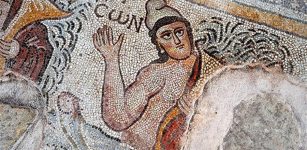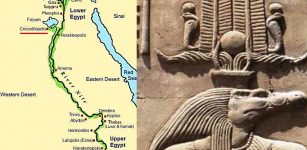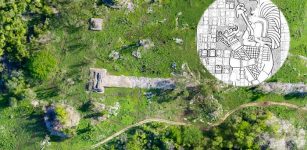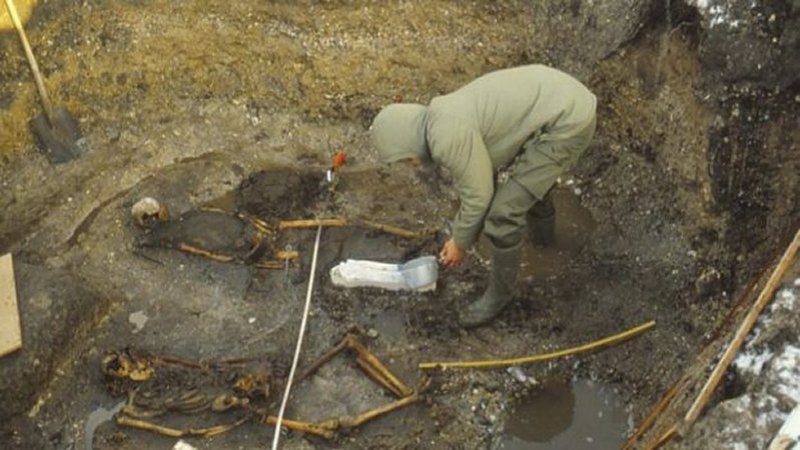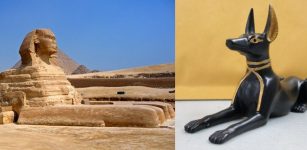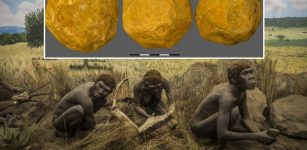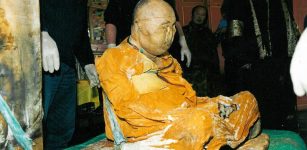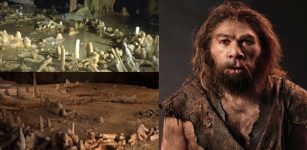Large Previously Unknown Roman City Discovered At The Foot Of The Pyrenees
Conny Waters – MessageToEagle.com – What started three years ago as an ordinary study of some ancient ruins located around the San Pedro hermitage, known variously as El Forau de la Tuta, Campo de la Virgen, or Campo del Royo in Spain, has now resulted in the discovery of a large previously unknown Roman city.
A Corinthian capital and fluted drum with a shaft located in Artieda’s San Pedro hermitage. Credit: Jose Angel Asensio Esteban
Scientists from the University of Zaragoza’s Archaeology Department have now confirmed three sites form a large single archaeological complex at the foot of the Pyrenees. Archaeologists have detected two phases of occupation on the site’s surface: one during the Roman imperial period (the 1st to 5th centuries) and another during the early-medieval Christian era (the 9th to 13th centuries).
In their study, scientists express surprise that despite the city’s large dimensions and “buildings of monumental proportions,” no one knows its ancient name.
The ancient Roman city is situated on still unexplored agricultural lands, and the settlement is possibly larger than discovered so far.
“The Roman settlement stood next to the road connecting three northern cities: Iaca (Jaca, Huesca), Ilumberri (Lumbier, Navarra) and Pompelo (Pamplona, Navarra). Currently known as Camino Real de Ruesta a Mianos (the High Road from Ruesta to Mianos), the road lasted through the Middle Ages as a stretch of the French Route, the Arles Way or the Via Tolosana (Tolouse Route), as part of the Way of St. James (Camino de Santiago), which leads to Santiago de Compostela in Spain’s northwestern Galicia region, where the remains of Saint James were said to be buried.
Inside the hermitage, the study’s authors have identified two Corinthian capitals, three Italic Attic bases, a classical Attic base, several flat-edged fluted shaft drums, and a fragment of cornice. The huge dimensions and typology of the artifacts indicate that they came from several early imperial public buildings. According to José Ángel Asensio, one of the investigation’s research directors, two of the capitals “would have been part of Corinthian columns more than six meters high, and they would have belonged to a public building of enormous dimensions, perhaps a forum temple. Regarding their chronology, stylistically they can be dated to the end of the first century, from the late Flavian period or the beginning of the Antonine period.”
The study confirms that these pieces come from at least two different monuments. Their typologies indicate that they were sculpted more than half a century apart, “which demonstrates a prolonged period in the process of monumentalizing the city.”
To the west of El Forau de la Tuta, next to the San Pedro ravine, “an impressive set of public works made of opus caementicium (the Romans’ early version of concrete) including at least four sewer outlets, a powerful massive abutment, a foundation, and a series of quadrangular structures,” possibly supply cisterns, is also preserved. The sewers are covered with barrel vaults and formwork that are supported by 0.80-meter-high side walls.
“The presence of these works is typical of urban settlements, where water drainage was a problem that had to be addressed, especially in relation to buildings, such as bath houses, that produced a large amount of water waste,” the El Pais reports.
Inscription of four tombstones from the site reveal “that the gravestones came from an “important cemetery that was maintained through the end of the period.” In addition, some of the names engraved on the tombstones are of Basque-Aquitaine origin, “which supports the presumed Basque ethno-linguistic affiliation of the inhabitants of this part of the Jacetania-Canal de Berdún region during Roman times.”
El Pais reports that “archaeologists are also currently studying a sculptural fragment that is preserved in an Artieda private collection. The artifact—which was collected near the hermitage— is an incomplete, nearly life-sized left hand that holds a patera umbilicata [an offering bowl], which would have been part of a statue representing an offering figure. The limb was sculpted in white Luni (Carrara) marble, a material typically used in early-imperial urban settlements.”
Archaeologists have also discovered two intersecting roads. ““On one of the roads, possibly one of the settlement’s main streets, we documented the ruins of a sidewalk and a surface channel for draining water, which pedestrians could circumvent by means of three steppingstones. Judging by the presence of the two square foundations on its sides, this main street must have had a porticoed sidewalk,” explains José Ángel Asensio, one of the study’s authors.
A detail of the black and white mosaic found at the Forau de la Tuta site. Credit: University of Zaragoza
Scientists can confirm one building was for baths. Inside the structure archaeologists unearthed an extraordinarily preserved black-and-white tessellated pavement. “Decorated with iconographic motifs in white on a black background, it has shells or scallops in the four corners, while the central emblem features seahorses, ridden by little Cupids, facing each other next to three representations of marine animals, a fish in the upper part and possibly two dolphins in the lower part.”
As explained by El Pais, scientists also found “ample remains of black and white mosaics made with tesserae (small cubes of stone or glass) and fragments of rudus (a layer of material placed under the tesserae), as well as pavement in the subsoil that belonged “to a rectangular space of about 5 by 3.50 meters, which preserved the entryway’s threshold, which was carved into two pieces of sandstone and housed a double swing door.
See also: More Archaeology News
Thus, the archaeologists are certain that everything they’ve found so far “corresponds to a single urban complex from between the first and second centuries, and that the city had infrastructure and public monuments, including baths, a water supply system, regular urban planning, sewers, and possibly a temple. They admit to being surprised at not knowing the city’s name, but no historical document mentioning it has survived.”
Written by Conny Waters – MessageToEagle.com – AncientPages.com Staff Writer



